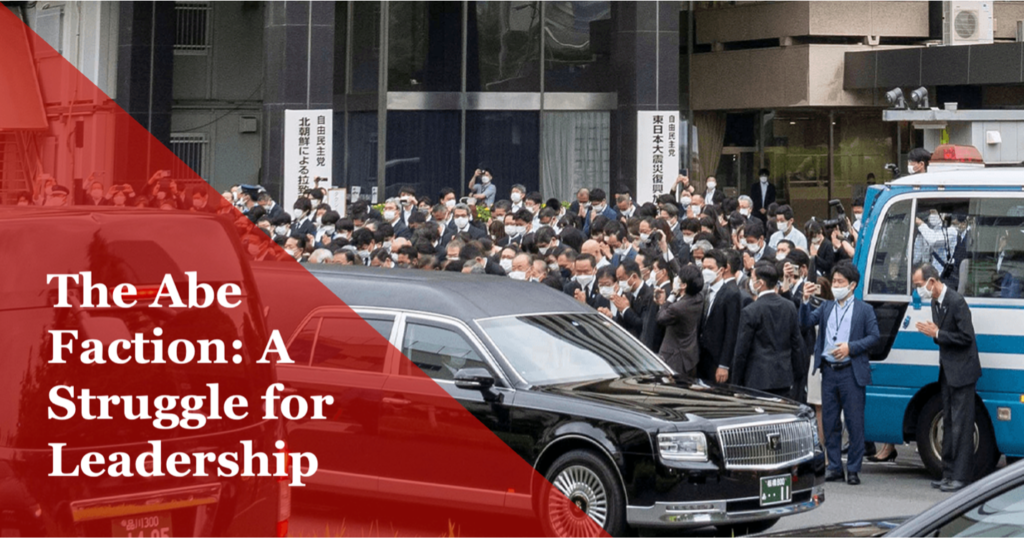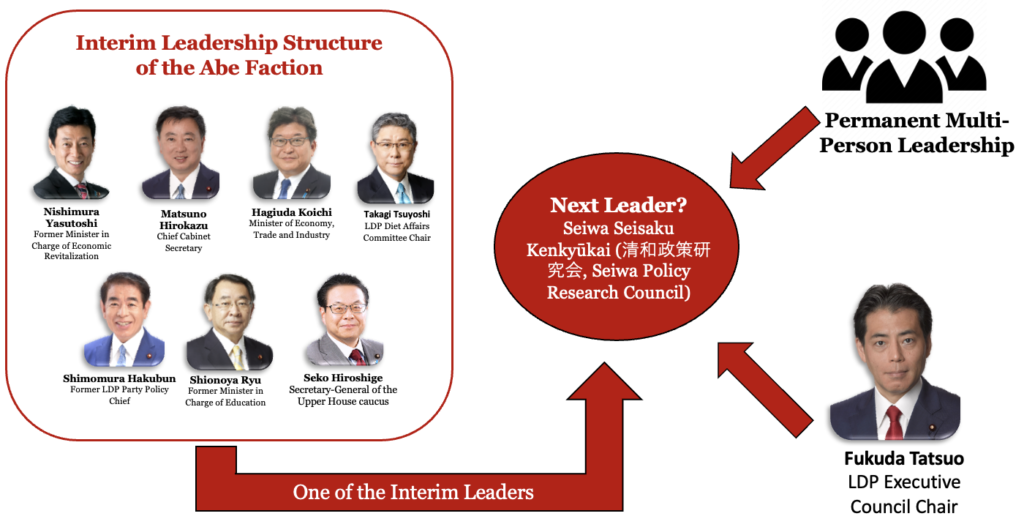
Abe Faction: A Struggle For Leadership?
Abe’s sudden death did not allow him to name a successor for his position as head of the LDP’s largest faction – Seiwa Seisaku Kenkyuukai, commonly referred to as the “Abe Faction”.
Factions within the LDP are a relic of the 1955 amalgamation of the Liberal and the Democratic Party. Due to this consolidation, politicians with differing political orientations saw themselves confronted with the task of advocating their stances within a very heterogeneous political party. Therefore, early LDP lawmakers formed institutionalized factions that to this day play a large role in the party’s management.
As institutionalized coalitions, LDP factions yield power by dictating cabinet postings, providing election support, and deciding on who gets a seat in parliament. The heads of these factions often become Prime Ministers, indicating the significance of factional politics in the LDP.
The Abe Faction, with 97 members, is the LDP’s largest faction. Due to its size, it is one of the most powerful factions, often yielding critical influence on intra-party decision-making. In comparison, the current Prime Minister’s Kishida Faction counts 40 members, ranking only fourth in terms of size.
Shinzo Abe’s death plunged the LDP’s most powerful faction into disarray. At least until Abe’s State Funeral in September, the Abe Faction is being held together by a constellation of seven senior members, who have each held several ministerial positions. This interim leadership structure includes past Education Minister: Shionoya Ryu, LDP Policy Chief: Shimomura Hakubun, current Minister for Economic Revitalization: Nishimura Yasutoshi, Chief Cabinet Secretary: Matsuno Hirokazu, Trade Minister: Hagiuda Koichi, Secretary-General of the Upper House Caucus: Seko Hiroshige, and LDP Diet Affairs Committee Chair: Takagi Tsuyoshi.

All seven members of the current leadership structure constitute potential successors for the Seiwakai leadership and to some, Abe even referred to as such before his assassination. Shimomura, for example, aspired to a PM candidacy during the last election but backed down over pressure from exiting Prime Minister Suga. Shimomura might view the Seiwakai Presidency as an essential station on his quest for another attempt to become Japan’s Prime Minister.
Due to its size, the Abe Faction is a colorful mix of Lower- and Upper House lawmakers with varying personalities and ideologies. Abe, for his part, effectively managed the Seiwakai’s heterogeneity through crafty leadership. However, as there currently exists no candidate that resembles Abe’s charisma, some in the Seiwakai advocate for making the multi-person leadership permanent.
Then there is young LDP Executive Council Chair: Fukuda Tatsuo. Fukuda is an increasingly popular figure not just because of his well-known family pedigree, but also because Fukuda already provided insight into his leadership skills during the most recent LDP leadership race. He mobilized a group of young LDP lawmakers to vote on party presidential candidates. Thereby, Fukuda challenged the electoral tradition of just supporting the candidate that is backed by one’s faction.
There are strong voices within the LDP urging the Seiwakai to maintain unity. For example, LDP politician and former Justice Minister Mori Eisuke stated last week that “… a thirst of power” by some in the Abe Faction poses the greatest threat to its survival.
All this comes at a time when Prime Minister Kishida, who closely follows the developments within the Abe Faction, is on the cusp of a major Cabinet reshuffle. In Japanese politics, Prime Ministers solely chose Cabinet Ministers. In doing so, they must consider faction strength when allocating cabinet positions.
Last year, Prime Minister Kishida awarded 5 cabinet positions to the Abe Faction after Abe convinced him to do so through backroom bargaining. It remains to be seen whether Kishida maintains the current distribution of cabinet posts or uses the weakened Abe Faction to choose candidates that better please his political interests. No matter the outcome, Kishida’s choices during the reshuffle will certainly provide us with an outlook on how he is planning on managing party unity, individuals, and intra-party groups during his tenure.
The critical challenge for the Abe Faction is to avoid splintering by finding a new leader who can maintain intra-factional unity. It is not a foregone conclusion that one will emerge; what can be said with clarity is that Abe’s death triggers a tectonic realignment within Japanese politics. Only time will tell the full impact that Abe’s loss will leave on the LDP and Japanese politics.
